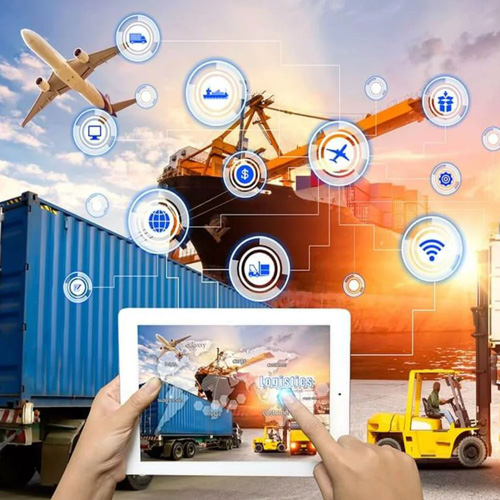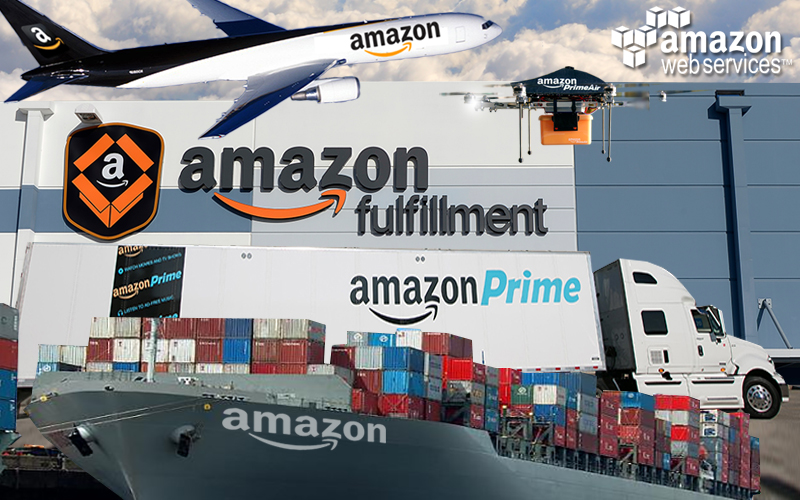When most people think about Amazon, they’re imagining shopping, Prime Day deals, or perhaps what they’ll binge-watch next on Prime Video. Behind all those boxes showing up on your front porch, perhaps quicker than you can even fathom, is the unsung hero: Amazon Logistics. Let’s explore what Amazon Logistics is, how it works, and why it is such a game-changer in the world of delivery.
What is Amazon Logistics?
Amazon Logistics is its own shipping and delivery network. Putting aside traditional carriers, such as FedEx, UPS, or DHL, Amazon has created an army of its own-branded delivery trucks, vans, planes, and even drones to do the work. This gives Amazon full control over every stage of its delivery process—from the moment you click “Buy Now” up until your package arrives at your doorstep.
How Amazon Logistics Works
Amazon Logistics executes package delivery through an intricate yet highly effective network involving fulfilment centers, delivery stations, and delivery drivers. Simplified, the process goes like this:
Fulfilment Centers:
These are huge facilities that keep the inventory of Amazon products. When a customer places an order, the nearest fulfilment center picks the product, packs it, and readies it for shipment.
Sorting Centers:
After packing, packages are sent directly to a sorting center. Here, the centers will sort the packages according to their intended destinations. It helps the centers ensure that packages take the quickest route to the appropriate final destination.
Packages head to delivery stations closer to the customer’s location after sorting. A delivery driver assigns packages to these small facilities.
Last-Mile Delivery:
This is the final and most critical stage in last-mile delivery, where independent drivers, using their own vehicles, make deliveries to customers. Small businesses, contracted through Amazon, that serve as its delivery service partners are also actively involved in last-mile delivery service using Amazon-branded vans.
The Power of Technology
Amazon’s logistical network employs sophisticated technology at its core. Below are some methods by which Amazon utilizes technology to enhance efficiency.
Machine learning and AI:
Amazon deploys sophisticated algorithms for demand forecasting, route optimization, and decreasing delivery times. These help the company save some pennies while hastening up the process.
Robotics:
In Amazon’s fulfilment centers, robots collaborate with human employees to select and package items, thereby cutting down on order processing time. Sensors and cameras equip these robots to move swiftly and safely.
Drone Delivery:
Amazon has also been working on delivering its products using drones, called “Prime Air,” in order to further reduce delivery time. Though still in experimental phases, drones may well become a significant part of Amazon’s logistics in the future, especially for smaller items.
Real-time Tracking:

You receive real-time information about your package’s location and when it will arrive.
Why Amazon Logistics is a game changer
Amazon Logistics has disrupted the traditional landscape in many ways around speed, reliability, cost, and innovative use cases. Among the key differentiators are the following:
Speed and Reliability:
With Amazon’s own delivery network, the fastest delivery times are available, often including same-day or next-day delivery in many areas. Traditional carriers find it difficult to match the level of speed and reliability that Amazon offers.
Cost Efficiency:
Amazon eliminates the involvement of any third-party carrier, streamlining its routes and processes in order to reduce shipping costs. Customers typically bear the brunt of this cost in the form of minimal or non-existent shipping charges.
Flexibility and Control:
Amazon has also developed its logistics network, scaling it up or down depending on demand. During the demand period, such as holiday or major sale seasons, it’s not a big hassle for the company to start a new delivery station or add more drivers.
Social Issues: The bigger Amazon gets, the more it targets labor practices, safety concerns, and market competition.
Labour and Management:
How to manage such a large workforce—to say nothing of the fleet of delivery drivers—is fraught with its problems. Tales of drivers dealing with tight schedules, long hours, and rough conditions have inspired many.
Environmental Impact:
The rapid expansion of Amazon’s delivery network also sparked concerns about its carbon footprint. While Amazon is looking into electric delivery vehicles and other green initiatives, overall the impact that its logistics operations have becomes hotly debated.
The future of Amazon Logistics
Amazon Logistics is not a static platform; rather, it is an evolving one. Besides that, the company is also working on introducing new technologies, such as self-driven cars and drones, to make its delivery faster and more efficient. To reduce carbon emissions, other viable options are being considered by Amazon, such as electric delivery vehicles.

Also, it provides third-party logistics services. Besides Amazon package delivery, it has developed into a delivery service for other companies, a business that may well position itself as a competitor to the traditional carriers FedEx and UPS.
Conclusion
It is not a delivery service but a huge, technologically driven network that changes the way we receive packages. Focusing on speed, efficiency, and customer satisfaction, Amazon Logistics is setting new standards for what delivery should look like. In a company that’s constantly innovating and expanding, delivery will sure get more exciting.




